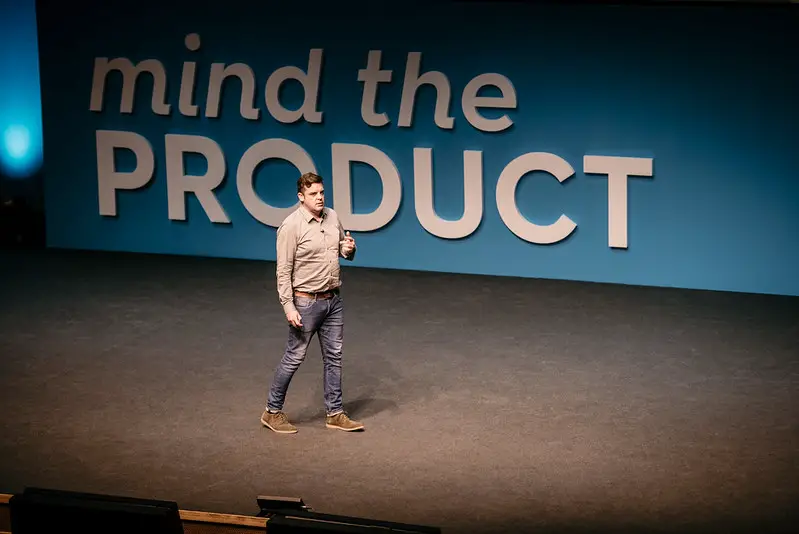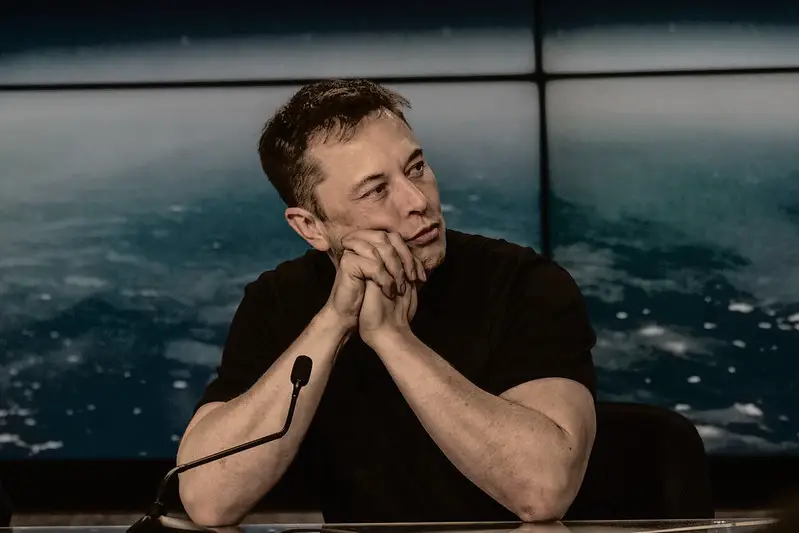Have you ever experienced a time when all the decisions you made gave amazing outcomes at the work? You already knew intuitively the strategies will work out in every difficulty you experienced. And it’s not just that, but you also amazed your committee and stakeholders with innovational resolutions.
But later, your performance worsened. You were using the same strategies that used to work, but they were working no more. You couldn’t get the reason. While your confidence flagged, your team also did so. You become more and more desperate to prove that you were the same leader. However, everything just worsened.
If you’re going through the same situation, you’re not the only one. Various leaders find their careers weakening, even though they’ve been amazingly successful in the past. This occurs when you did not recognize that your former tactics have become outmoded. If you’re going to restore your position as an excellent leader, you need to use new approaches for your role. And the meaning of it is unlearning.
Try Audible and Get Two Free Audiobooks

Chapter 1 – The Cycle of Unlearning is a method that you use when your performance fails, for changing your mind.
Serena Williams was the world’s top-ranking female tennis player in 2010. However, an injury and poor health made her sit out the first half of the 2011 season, and in the rest of the year, her performance was patchy. The next year, Williams lost to Virginie Razzano who was the 111th place at the French Open. She hit the bottom.
But Williams was decided not to give up. She took radical decisions for her training regimen, she even decided to appoint a new coach. She held all four Grand Slam titles at the end of the 2015 season. Under the unique direction of Patrick Mouratoglou who was her new coach, Williams unlearned the way of becoming a tennis champion. Her risk had worthed it.
Williams’ drive from defeat to victory is motivating for everyone with ambitious purposes. Nevertheless, it displays a valuable lesson for business leaders too. Fresh out her first-place state, Williams turned back to the court in 2011 by playing her usual way. However, she was not getting the results she wanted, not anymore. That weakened her self-esteem and made her play even worse. If your performance in the work has worsened, like Williams’ in 2011, you should change strategies. And this means unlearning.

The Cycle of Unlearning is not an education program or a course – it’s a three-phase circle that supporting you to let go of the experience that not serves you anymore, even if it’s made you successful in the past. That is not the same as ignoring the knowledge you’ve got from former experiences. It implies realizing things that are outdated and looking for new concepts and approaches.
Unlearning demands courage because you must attempt testing out new approaches by leaving your comfort zone. That seems risky, yet it’s crucial if you want to maintain success since we live in an era of rapid changes. As it was for ages, knowledge is not something that can be transferred from generation to generation. Presently, it has a short expiration date, and we need to learn to renew our stock in times of need.
If you’re doubtful about leaving the approaches that have made you successful in the past, remember the companies that have never got old with time – like Google and Apple. Those organizations have leaders who are ready to push themselves into undiscovered waters, try to achieve new information, and seek for opportunities that inspire extension. If you’d like to be in their positions, firstly, you should realize things that hold you back, which the following chapter will cover that.
Chapter 2 – By developing awareness about the obstacles to unlearning, overcoming them becomes possible.
Andy Grove who is the CEO of Intel had a crisis on his hands. Intel’s memory chips’ market demand was falling. The business was going to fall if Grove did not do something extreme. While Grove was focused on the crisis, he asked his colleague what a new CEO can do for saving the firm. His colleague said they’d give up of memory chips.
That was an enlightenment moment for Grove. He decided to do things that an outsider would do. Instantly, he moved the firm to produce microprocessors. Rather than espousing a failing business strategy, he looked at the situation from a different aspect of view and discovered a strategy to overcome his obstacle.
Since technology improves so quickly now, it’s sure that you’ll encounter an alike crisis at some point in your leader career just like Grove did. Yet not all barriers are caused because of external elements, like technological changes or customer needs. Usually, the biggest obstacle we meet is ourselves if our tried and tested strategies fail.
Most of the time, our way of thinking is second nature, therefore we don’t care whether or not they’re useful. If you desire to be the leader that can handle every storm, you need to realize the inner obstacles stopping you from unlearning.

Until reaching adulthood, most of us have lost that childhood ability to continue learning all the time and being open to new concepts. We’ve lost our motive willingness to follow the trial-and-error method we used when we were little. Our curiosity is hampered by the fear of making mistakes, particularly if we’re under pressure for achieving ambitious outcomes.
For our capacity of unlearning, our ego also has a role. We think that the information we already had is true and accurate, this drives us to be closed to other potentialities. It requires great humility to admit that our way may not be the best one. However, sadly, lots of leaders don’t see humility as a feature they should grow.
To prepare yourself for the proper mind-set to unlearn, follow Andy Grove’s way, by being welcoming to new thoughts. If you found the courage to do that, you’re ready to begin the first step of the Cycle of Unlearning.
Chapter 3 – The Cycle of Unlearning’s first stage is letting go of your past achievements.
How many times did you attend a leaders’ retreat and come back loaded with new opinions, just to return to old habits within a couple of weeks? What is the reason that these training sessions don’t cause the enduring changes you want?
The business environment is constantly fluxing, however – sadly – your neural pathways aren’t. The meaning of this is that you’ll use approaches from the past, even in different situations. And even your previous decisions were solid there’s a risk that they won’t work now. The thing that you need is a system that makes you find the solution that properly befits your present condition.
After you’ve admitted that what worked yesterday might not work now, you’re ready to begin unlearning as writer Barry O’Reilly referred, which is the first step of the Cycle of Unlearning.
The first step of unlearning is identifying a purpose or request you want to undertake and take responsibility to realize that purpose. You might want to develop the goods your firm makes, such as contract-free mobile phone service, for instance.

The second part of the unlearning process is visualizing your ideal result. How does achievement seem like the time that your product satisfies customer needs? How will you understand whether the needs have been satisfied? How will your customers behave to show that you’ve reached your purpose? Note the vision that describes the best possible result, without putting limitations on what you can really able to.
The third part of the unlearning phase might be difficult. In that part, you have to choose courage instead of comfort. For finding the answers you’re seeking, you should try new things. That sounds risky since humans are wired to be scared of the unexplored. The meaning of this is admitting that you may not get the best solution directly. Take your time for experimenting and withstand the stress of making a quick decision. The first iteration of your phone service may need some tweaks before you find a balance between satisfying customers’ needs and gaining profit, for example.
You’re ready for the second phase of the Cycle of Unlearning after you’ve distinctly pronounced your purpose and committed yourself to explore the unknown fearlessly.
Chapter 4 – The cycle of Unlearning’s second phase is relearning by building small, specific objects.
You probably know about those apps transforming couch potatoes into marathon runners in only six months. If you’re a non-runner, that probably seems unusual. However, the developers of the app realize something crucial: great objects can be accomplished by taking small steps consistently. For that reason, their exercise routines start with only a basic ten-minute walking. Later, sessions slowly become longer and longer and intensity to build fitness increases besides motivation.
The Cycle of Unlearning’s second phase is relearning, and it has an alike model to the app. During the first phase of unlearning, you’ve challenged your initial mind-set. Now, you should question your prejudices about things that are possible – similarly to the non-runner does the time they signed up to the app.
The first step for relearning is writing an unlearned statement. Recognize the challenge or purpose that you identified in the first phase of the cycle? Now, your unlearn statement explains that purpose in a calculable way. Your statement can be, “Grow market share by 10 percent in the next quarter.”, for instance.
Momentarily, you have a calculable purpose, the second step is creating a scheme to reach it. That scheme will cover taking many little steps and experimenting to get solutions. Without neglecting any ideas, try each strategy you could possibly think of for achieving your purpose. Next, identify an idea that you can work on. This work should be the most possible tiniest. Remember that marathon app, and start with something that is equal to a walk around the block. Take your step fearlessly, and learn from the experience by considering it.

Discover little things to support yourself on the journey for your purpose. In that way, you won’t give up before you even started. Recognize that everything you make makes you closer to discovering your unlearn statement. Definitely celebrate the result, whether it’s negative. You’ve gained experience by actioning your opinion, and, in itself has worth it. Any positive result will make you more assured of taking the next step, therefore you should also celebrate them.
Don’t undervalue the importance of little achievements. Each positive result – even a small one – will motive you to keep working for your goal. And before realizing it, you’ll be crossed the finish line.
Chapter 5 – Breakthrough notifies the steps you should follow next, therefore you can be closer to your purpose.
Leonardo da Vinci who is a scientist, inventor, and artist, had an innovative way of problem-solving. He noted questions about the big secrets of his time. For today, that may not look especially groundbreaking, but it was in the 1400s. Asking questions wasn’t the usual way for finding solutions since the scientific method hadn’t been found yet.
Choosing a questioning mindset is important for the Cycle of Unlearning’s third phase – which is a breakthrough. A breakthrough happens when you’ve gained new data by taking small steps approaching your purpose.
Let’s examine that in practice. After you’ve taken that first little step in the relearning phase, you’ll get a result whether negative or positive. In that tennis example, Mouratoglou and Williams started by improving Williams’s footwork, for example. As a consequence, Williams’s speed and power increased, and that caused the breakthrough phase. The time you reached the breakthrough phase, you may not have achieved your final purpose yet, but now you’re in a position that you can benefit from things you’ve learned. That learning will be helpful for the next step you take. This phase benefits you to judge what you should do next to get closer to the end you desire.
Ask questions about the achievements and difficulties that what you’ve faced, and think about what could’ve been done better. In this way, you’ll increase the overall quality of your result, step-by-step, since every little object will be guided by the knowledge you’ve gained from the earlier one.
As a part of the breakthrough phase, you’ll want to recognize the actions that are supporting your purpose too. Mouratoglou used that method by asking Williams to examine her competitors before every match, and later develop strategies particularly for that player. That change in practice contributed to William’s upgraded performance, which fed her overall self-esteem.

As a leader, it’s your job to help relate your team’s performance with the purpose you are all working for. If your team perceives how their actions played a role for a special result, they will be even more excited to undertake the next challenge. You should take advantage of this enthusiasm. The new information you’ve got from the breakthrough phase normally will drive you back to the unlearning phase, repeating the cycle over and over. Since the cycle is continuing, you’ll demand excited and strengthened employees so you can receive better and better resolutions.
Since we have learned the phases that form the Cycle of Unlearning, let’s discover the ways of usage of them in the business world.
Chapter 6 – Unlearn your administration method by giving up outdated leadership patterns.
If you are a boss, your administration education probably expired a few centuries ago. You may not be aware of this, but the model that numerous leaders use was formed in the Industrial Age, the times that the average worker could not get formal schooling. They were prepared to do a job, following the process developed by their manager.
However, the modern workplace is entirely different. People are not just wheels in the machine that hired to obey orders. They’re innovation’s origin. If your employees only go through actions that you’ve dictated, you’ve trained them to follow, and the meaning of this is that they won’t be enabled to problem-solving.
If employees have their own knowledge, a leader’s actual function is to verbalize objects, and then support their team as they working to achieve them. That type of leadership is the reverse of micromanaging or directing with an iron fist. The meaning of that is giving employees the right for taking their own decisions and responsibility for the consequences.
After you’ve pronounced a definite purpose to your team, such as developing technology for a streaming service, support them while they are experimenting through questions and ensuring that feedback circles are in place to decrease risk the most possible quickest way. That is especially critical while the stakes are high since it will lessen your team’s concern. If you have a method to detect any small errors before they become great problems, your team will be more comfortable about testing new ideas, and that will direct them to larger innovation.

Adrian Cockcroft who is a technology pioneer used that leadership style to promote originality the times that he worked at Netflix as Cloud Architect. One day, he attended a meeting with superior managers from over the retail and financial sectors. They all insisted that their innovation wasn’t working since they didn’t have skilled engineers like Netflix. Cockcroft explained to them the cruel fact. Netflix managers gave their engineers the freedom and right to find solutions in their own style. The actual problem the other firms facing was not a lack of excellent engineers, it was a lack of effective managers.
If you enable your team to discover the solutions in their own way, you create an environment that ideas can grow. Rather than following directions blindly, your team will be free to explore. That will cause the innovative solutions that your firm needs for continuous success.
Chapter 7 – Unlearn your presumptions about your clients by contacting them straight.
While John Legere was the CEO of T-Mobile, he listened to customer service calls for three hours, every day. He tried to discover the thing that causing customer problems, and he knew the most dependable method for this understanding was straight from them.
Legere could have requested his team to make a report about customer feedback. But that would have taken time. It would have resulted in a clear account of how T-Mobile products were actually performing too because Legere’s administrators would’ve filtered feedback into a particular, clear report. Listening into calls gave Legere a direct aspect of what his customers truly thought.
If you’re not even interacting with your clients on a basic level, you’re holding yourself back from one of the most valuable reservoirs of data. After listening to your clients, you can begin unlearning your presumptions about the things the client wants and about your goods or services. That will make you perceive your products with fresh sight, therefore you can realize the point that they’re failing.

Elon Musk who is the CEO of the electric vehicle manufacturer firm, Tesla, is using Twitter to contact his customers in person and in real-time. And he is not only listening feedbacks through Twitter, he also replies to messages in person and takes action to solve customer issues. Hence, the time that a customer complained about the situation of Tesla drivers were using recharging stations in California as parking spots, Musk found a new policy just in six days. For discouraging people from using those spots for parking, the policy required a fee on any fully charging cars sitting in empty recharge stations. If Musk had waited for one of his supervisors to report on the objection, it would’ve taken far longer to came up with a solution, and the client would have become madder and madder.
That turns listening to your customers into a win-win state. Through caring about feedbacks, you develop your products and also make your customers feel supported and valued. That builds brand loyalty and makes your customers also your ambassadors when they tell their loved ones about the positive experience they’ve had with you.
Chapter 8 – Unlearn product improvement models via involving clients as soon as possible.
The British government rejected the improvement of software that offers giving healthcare workers access to digitized patient records, in 2011. Before it was stopped, the software had already cost the United Kingdom an astounding £12.4 billion. The project included lots of reliable contractors. But all of them had failed to work together for overcoming the problems they have faced. Rather, they criticized each other until the time that the whole project failed.
Yet an excellent lesson in unlearning was born from the ashes of that failure. A team of only 30 people, headed by Andrew Meyer, were tasked with creating Spine 2 which is the IT infrastructure that would unite more than 23,000 healthcare systems in the United Kingdom. With bounded resources and various bureaucratic hoops to overcome, Meyer had to use his resources wisely. The meaning of it is thinking about product improvement in an original way.
But what did Meyer do? He began with moving his mindset from delivering a finished project to working near small milestones. He had tested the system to health practitioners while it was still not finished, in that way they could give feedback, and the team could relearn. That reduced the stress to make everything completely perfect before a user saw the system, and that gave the team more space to do a breakthrough by discovering the best resolutions without concern of failure. It also implies that if a little part of the system didn’t work, the team found out earlier and could fix it before passing to the next component.

Meyer’s determination to include clients while Spine 2 was being developed is a significant learning point for all leaders. Most of the time, clients don’t connect with a product until it’s been released. And by that time, it becomes too late. You’ve already spent huge amounts of time, money, and expertise in creating your product. It is more likely to produce one that satisfies clients’ needs if you determine those needs before you launch.
Unlearn the concept that a product or system is done after you’ve released it. Until the time you retire a product, you should always find ways to satisfy client needs or develop with innovations in technology. Via being committed to continuing development, you’ll adjust your products to all changes in market demand and become the leader of originality. That is a real sign of continuously unlearning.
Unlearn: Let Go of Past Success to Achieve Extraordinary Results by Barry O’Reilly Book Review
Adopting the Cycle of Unlearning as a policy will shift the way you think, view, and carry out your task as a manager. If you admit that the approaches you used to succeed yesterday may not work for you today, you become open to new data, opportunities, and methodologies. Your mind-set becomes open, helps you to work for your purposes– rather than being restrained by the acts you haven’t questioned, or aren’t even conscious about. Build a business environment that values endless innovation and empowers your team to explore. That will direct you to the innovation you need and will assist in assuring your continuing success.
Request an associate for data about how you can unlearn.
It can be hard to judge your own capacity to reach objects, but that is something a co-worker can help with. Consider something you want to get, then ask them on a range of one to ten how able you are of achieving that object. After, demand from them to recognize which of your acts are helpful– or limiting– you from reaching that objective. Lastly, work on one little change you could make to raise the possibility of succeeding and take action for it right away.
Try Audible and Get Two Free Audiobooks
